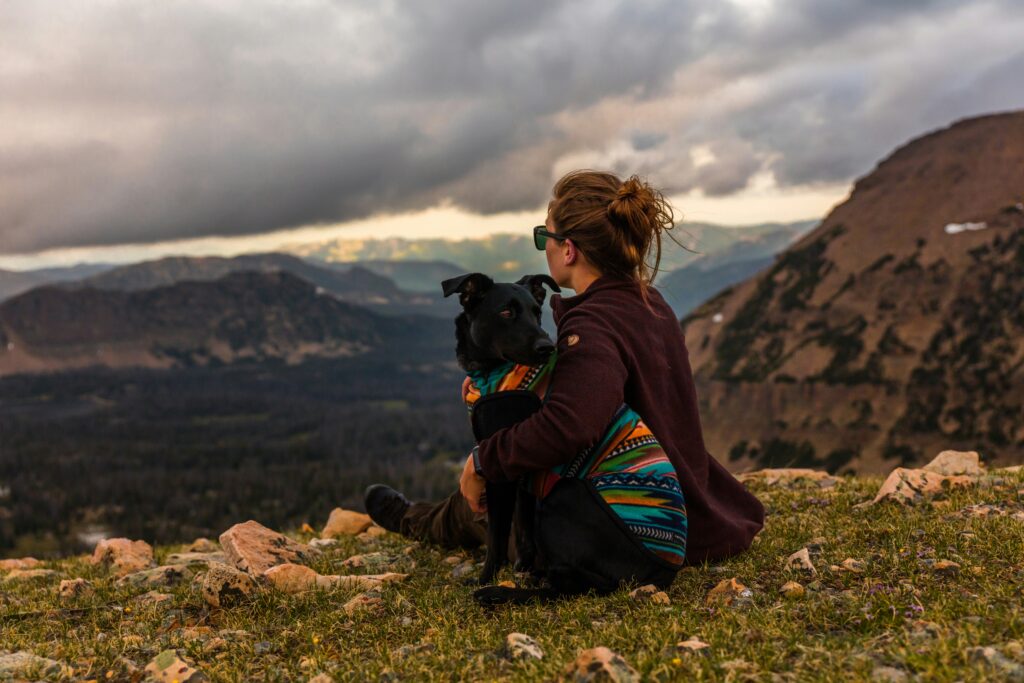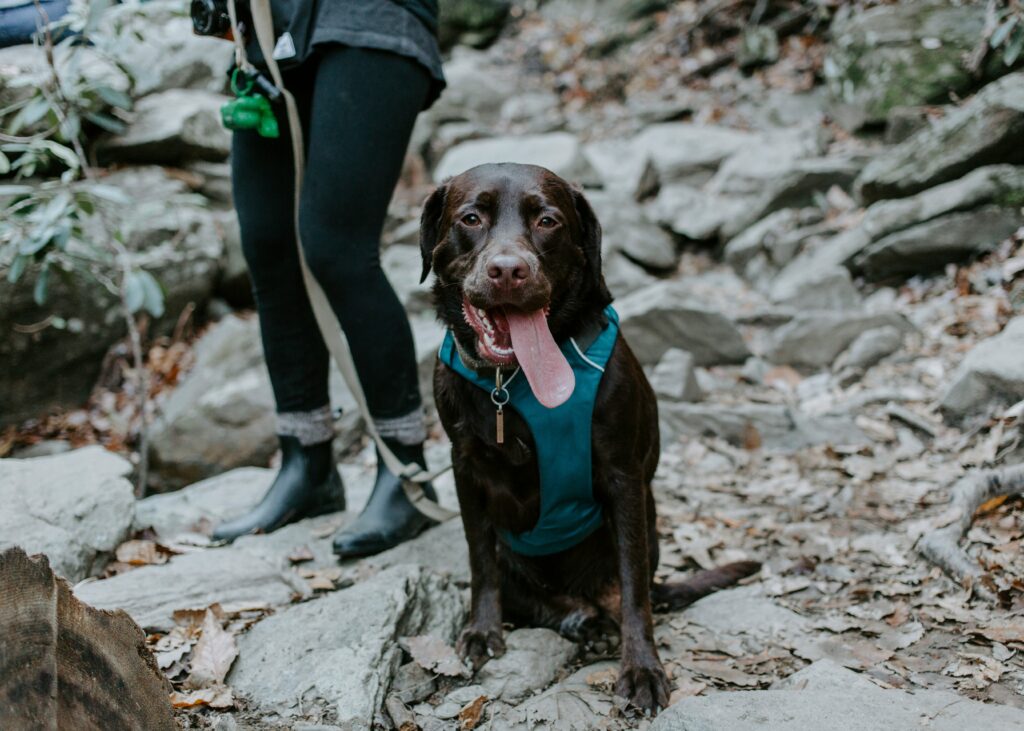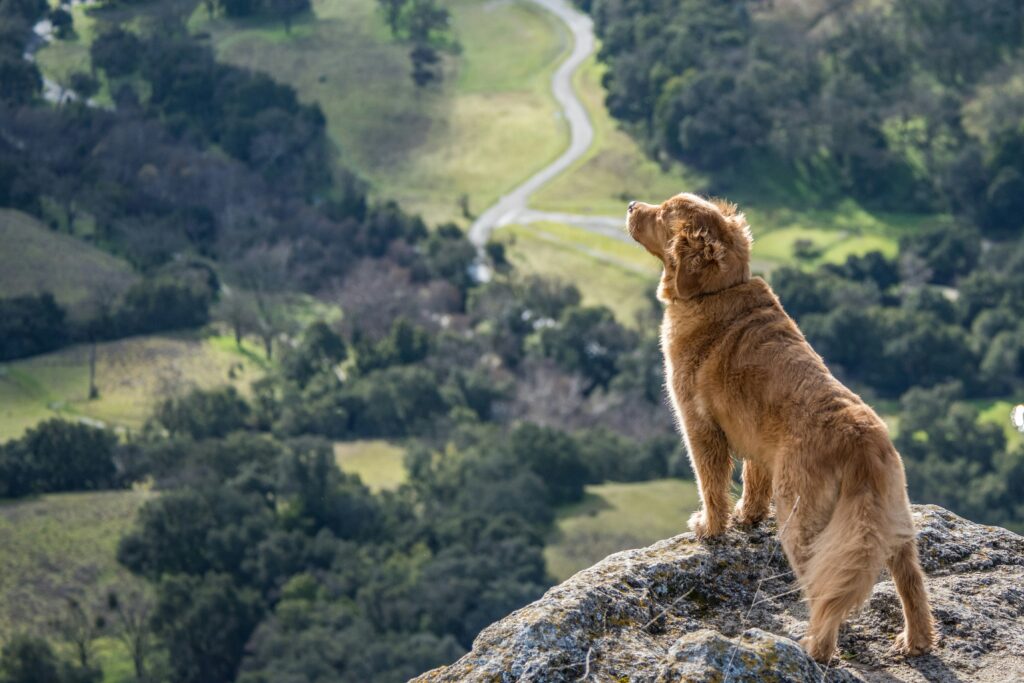Hiking with your dog can be a fantastic way to enjoy the great outdoors while bonding with your furry friend. Whether you’re a seasoned hiker or just starting, bringing your dog along can add an extra layer of joy and companionship to the experience. However, to ensure a safe and enjoyable hike, it’s important to prepare properly. In this blog, we’ll share essential tips for hiking with your dog.

1. Preparing for the Hike
Before heading out on a hike, it’s crucial to make sure your dog is ready for the adventure. Start by assessing your dog’s fitness level and health. Not all dogs are suited for strenuous hikes, especially if they have health issues or are older. Consult with your veterinarian to ensure your dog is physically capable of handling the hike.
Additionally, make sure your dog is up-to-date on vaccinations and protected against fleas, ticks, and heartworms. Invest in a good-quality harness and leash that provides comfort and control. A harness is often preferable to a collar for hiking, as it distributes pressure more evenly and prevents strain on your dog’s neck.
2. Choosing Dog-Friendly Trails
Not all hiking trails are suitable for dogs. Research and choose trails that are dog-friendly and appropriate for your dog’s fitness level. Look for trails with natural shade, easy access to water, and varying terrain. National parks and many local trails have specific rules about dogs, so be sure to check regulations and leash requirements before you go.
3. Packing Essentials for Your Dog
When hiking with your dog, pack essentials to ensure their comfort and safety. Bring plenty of water and a portable water bowl to keep your dog hydrated. Pack enough dog food or treats to maintain their energy levels. A first aid kit tailored for dogs can be invaluable in case of minor injuries. Don’t forget waste bags to clean up after your dog and keep the trail clean for other hikers.
4. Keeping Your Dog Safe on the Trail
Safety is paramount when hiking with your dog. Keep your dog on a leash to prevent them from wandering off or encountering wildlife. Be mindful of the weather; avoid hiking in extreme heat or cold, as dogs can quickly become overheated or suffer from frostbite. Take regular breaks to let your dog rest and hydrate, especially on longer hikes.
Watch for signs of fatigue or distress in your dog, such as excessive panting, limping, or reluctance to continue. If your dog seems tired or unwell, it’s best to turn back and seek shade or shelter. Carrying a pet first aid guide can help you handle minor injuries or emergencies.
5. Respecting Nature and Other Hikers
Being a responsible dog owner means respecting nature and other hikers. Keep your dog on designated trails to minimize environmental impact and avoid disturbing wildlife. Always pick up after your dog and dispose of waste properly. If your dog is reactive or nervous around other dogs or people, consider hiking during less busy times to reduce stress for both your dog and others on the trail.
6. Post-Hike Care
After a hike, give your dog a thorough check for ticks, burrs, or any signs of injury. Gently clean their paws to remove dirt and debris. Offer plenty of water and a comfortable place to rest and recover. Pay attention to your dog’s behavior in the hours and days following the hike; any signs of discomfort or unusual behavior should prompt a visit to the vet.

Hiking with your dog can be a delightful and rewarding experience, strengthening the bond between you and providing both of you with valuable exercise and fresh air. By preparing properly, choosing appropriate trails, and prioritizing safety, you can ensure that your hiking adventures with your dog are enjoyable and memorable. Embrace the beauty of nature and the joy of exploring the great outdoors with your loyal companion by your side.

